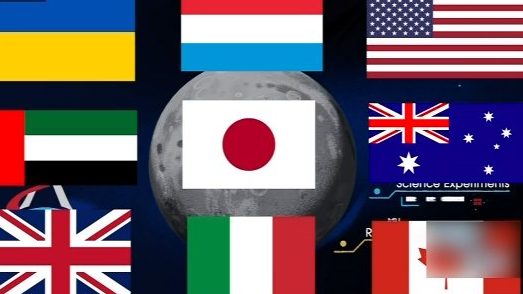In the 1960s and 1970s, the United States and the former Soviet Union carried out lunar sampling respectively. Nature magazine said that if the mission of the E-E5 was successful, it would be 44 years later that human beings would bring back lunar samples to Earth again.
In recent years, human interest in lunar exploration has been rekindled. In October this year, NASA said that water was discovered on the lunar sun for the first time.
The European Space Agency, India, Israel, Japan and Russia all plan to launch a lander or lunar rover in the next five years.
NASA Chief Scientist Jim Green: There are many important reasons why we are going to the moon. One of them is to practice to Mars. We want to learn how to live and work on another planet.

On October 26, NASA released a big message: Water was first discovered on the sun’s surface of the moon.
This suggests that water may be distributed throughout the lunar surface, not just in cold, shadowy areas.
This is a modified Boeing airliner carrying a telescope with a diameter of about 2.5 meters, which can observe the magnetic fields of celestial bodies and the activities of planets and stars. It is known as the “Spheric Infrared Observatory (SOFIA). It was it that completed this very meaningful observation.
Observational data show that water is “trapped” in the soil distributed on the lunar surface at concentrations of 100 to 412 parts per million, that is, about 100 to 400 milligrams of water per kilogram of lunar soil. This concentration is 1% of the water content of the Sahara desert.
Dr. Honeybor, NASA Goddard Space Flight Center: The environment on the moon is very harsh, so it is very surprising to find water on the moon, but it is very difficult for life to exist.

According to the introduction, SOFIA will continue to explore the moon in the next step to understand how water on the moon is generated, stored and transferred. These data will provide important information for future lunar exploration plans, help create the first lunar water map, and help future human space exploration missions.
NASA Chief Exploration Scientist Brick: It will be much easier if you don’t need to carry the water moon, because you can carry other things. Using what you already have on the moon is really a good idea for us to explore the next step.
NASA Director Bridentine tweeted that it is not clear whether the water can be used, but understanding the water on the moon is the key to the “Aldemis” project.
Artemis plans to send astronauts to the moon in 2024
The “Ardymis” plan is a plan for returning to the moon made by the United States. It is named after the moon goddess Artemis in Greek mythology. At present, a total of nine countries, including the United States, have acceded to the Aramis Agreement, but this agreement has caused international controversy.
“Aramis” plans to send astronauts to the moon in 2024 and establish a sustainable landing site on the moon in 2028, making it a transit station for human landing on Mars.
However, the “Aramis” plan has been facing a shortage of budget.

In September this year, NASA Director Bridenstine asked Congress to secure $3.2 billion in the 2021 budget for lunar lander development, but on November 10, the Senate Appropriations Committee proposed to allocate only $1 billion, less than one third of the budget requirement.
On November 13, the National Space Administration of Ukraine signed an agreement with NASA, becoming the ninth country to join the Ardumis Agreement after the United States, Australia, Canada, Italy, Japan, Luxembourg, the United Arab Emirates and the United Kingdom.

According to NASA, the agreement aims to “standardize” lunar exploration and resource extraction and avoid future conflicts.
However, the Artemis Agreement allows signatories or companies to create exclusive “safe areas” on lunar bases, which has caused great controversy internationally. The Financial Times commented that the Artimes Accord sounds like the title of a thriller, but in fact the United States wants to establish its own legal framework, establish a lunar colony and seize mining rights.
Half a century after human landing on the moon, a new lunar exploration craze resurfaced. It is not only in the common interest of mankind, but also the common responsibility of all countries to understand and use the moon, take the moon as the base station, and set out further deep space, and peacefully explore and use outer space.



